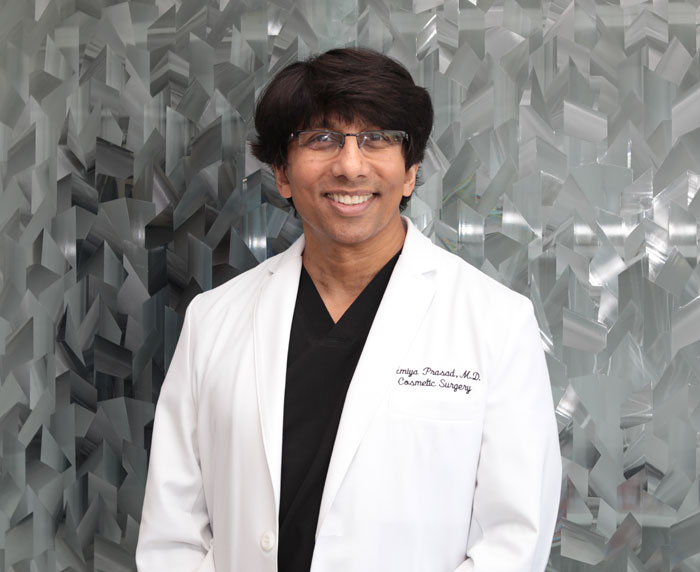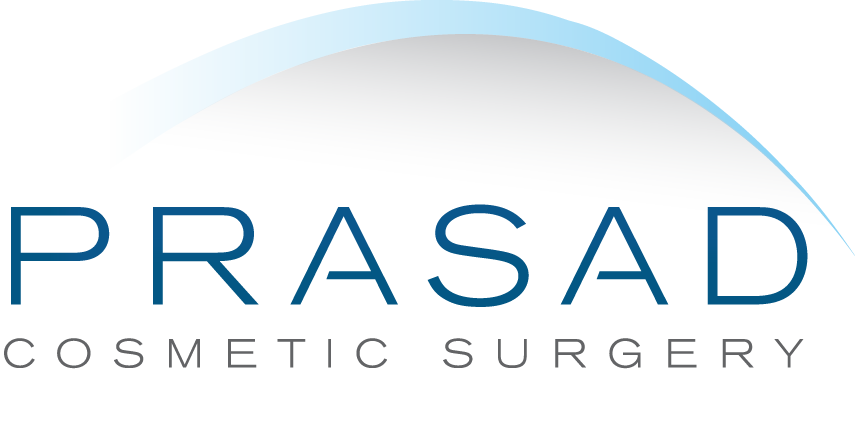The Importance of Finasteride in Treating Male Pattern Baldness
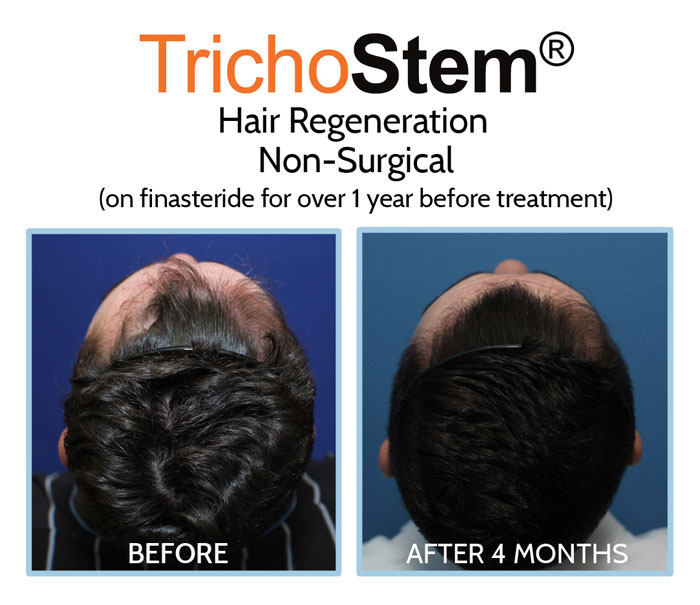
Male pattern hair loss affects many men, but there are often reservations about incorporating finasteride into a treatment strategy. I’ll share how I recommend and prescribe finasteride in my clinical practice.
What is Finasteride and How Does it Work?
Finasteride is a medication that inhibits the enzyme 5-alpha reductase, which converts testosterone into dihydrotestosterone (DHT). DHT-sensitive hair follicles gradually thin and eventually disappear, contributing to male pattern baldness.
Approved for use in 1997, finasteride has been widely prescribed to slow hair loss progression and delay the need for hair transplant surgery. In my experience as a hair transplant surgeon, it has been highly effective for most patients with male pattern hair loss.
The Discovery of TrichoStem® Hair Regeneration for Hair Loss
In 2011, my clinical practice took an innovative turn. We began using a stem cell-based wound healing material with platelet-rich plasma (PRP) to enhance donor area healing and improve graft survival in hair transplant patients. Unexpectedly, we observed a side effect—a year later, thinning non-transplanted hair became thicker.
This discovery led me to develop a non-surgical solution for genetic pattern hair loss: TrichoStem® Hair Regeneration. This treatment involves injecting PRP and ACell into the scalp.
How TrichoStem® Hair Regeneration Works
TrichoStem® Hair Regeneration works by thickening thinning hair, reactivating dormant hair follicles, and extending the hair growth cycle.
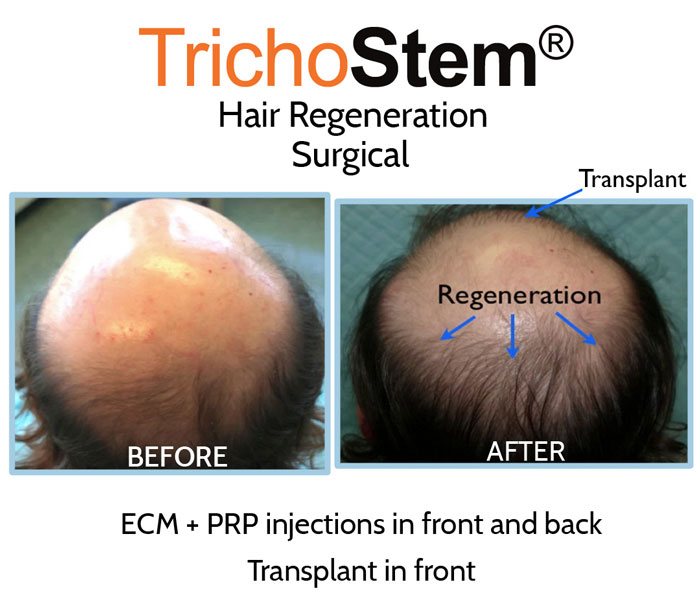
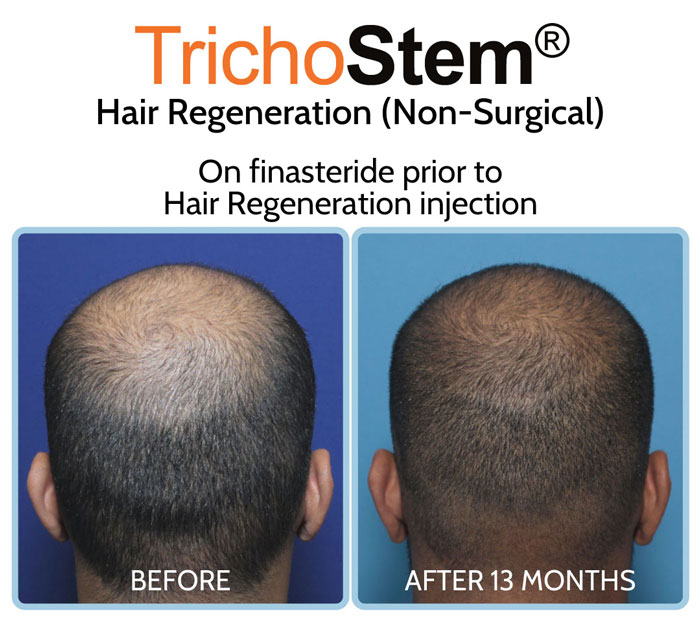
Remarkably, a single treatment session can provide significantly improved scalp coverage. This innovation marked a new category in hair loss treatment—the first since finasteride’s introduction in 1997.
Finasteride’s Role in Treating Male Pattern Hair Loss
Initially, concerns about finasteride’s sexual side effects prompted many patients to opt for TrichoStem® Hair Regeneration alone. Surprisingly, the treatment was consistently successful without finasteride for the majority of patients. This raised questions about the drug’s relative importance.
However, as we treated more patients and collected additional clinical data, patterns emerged. In some cases, TrichoStem® Hair Regeneration alone did not produce significant results. For these patients, adding finasteride and repeating the injection improved outcomes. Patients already taking finasteride often showed even better results when combined with TrichoStem® Hair Regeneration.
This data revealed that finasteride and TrichoStem® Hair Regeneration function through distinct mechanisms, each contributing uniquely to hair growth.
Developing a Personalized Treatment
To optimize treatment, I developed a classification system for TrichoStem® Hair Regeneration based on factors like:
- Current age
- Age of hair loss onset
- Degree of hair loss
- Other treatments (e.g., finasteride or hair transplant)
- Relevant medical conditions
During consultations, I assess a patient’s DHT sensitivity as low, moderate, or high. This classification helps me create a tailored treatment plan, giving patients clarity on their condition and the recommended approach.
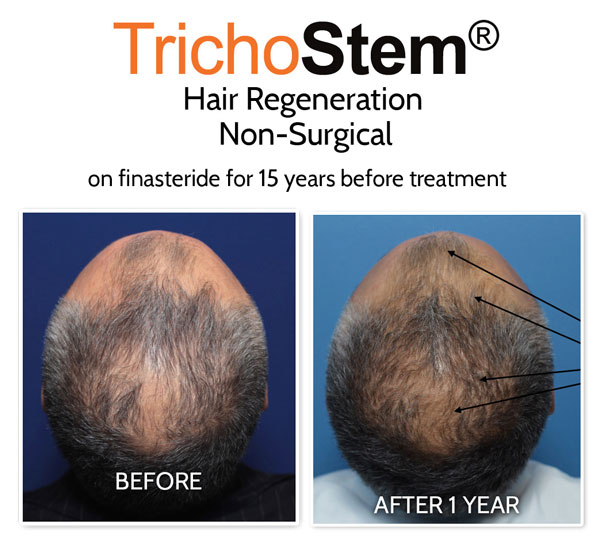
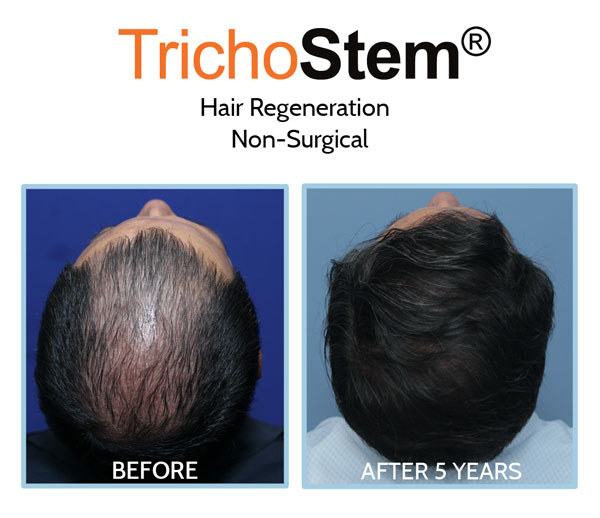
Long-Term Results and Booster Treatments
Since 2011, the benefits of TrichoStem® Hair Regeneration have proven to be stable, typically lasting 3 to 5 years with one treatment. For patients with shorter hair growth cycles or advanced hair loss, a second “booster” injection is often recommended after 15 to 18 months to maintain results.
Managing DHT Sensitivity with Finasteride
DHT sensitivity plays a crucial role in hair loss treatment. While concerns about finasteride’s side effects persist online, I continue to prescribe it for patients classified as highly sensitive to DHT. Combining finasteride with TrichoStem® Hair Regeneration has shown exceptional results, helping many patients manage male pattern hair loss effectively.
Conclusion
Finasteride remains a valuable tool for treating male pattern baldness, particularly when used alongside TrichoStem® Hair Regeneration. By tailoring treatments to individual needs, we’ve achieved significant and lasting improvements for our patients.
Hair Loss Loss Treatment Manhattan, NYC and Garden City, Long Island, New York
Dr. Amiya Prasad is a Board-certified cosmetic surgeon, and a Fellowship-trained oculofacial plastic and reconstructive surgeon. He has been practicing in Manhattan and Long Island for over 25 years. Dr. Prasad is also the founder of TrichoStem® Hair Regeneration Centers. This innovative center evolved from his work with extracellular matrix, and platelet-rich plasma in hair transplant surgery. Today, it offers a highly successful non-surgical treatment for male and female pattern hair loss, attracting patients from around the world.
To schedule a consultation, fill out the contact form below, or you may call any of our offices at (212) 265-8877 for Manhattan, New York City; (516) 742-4636 for Garden City, Long Island; or (703) 356-1336 for Vienna, Virginia.
